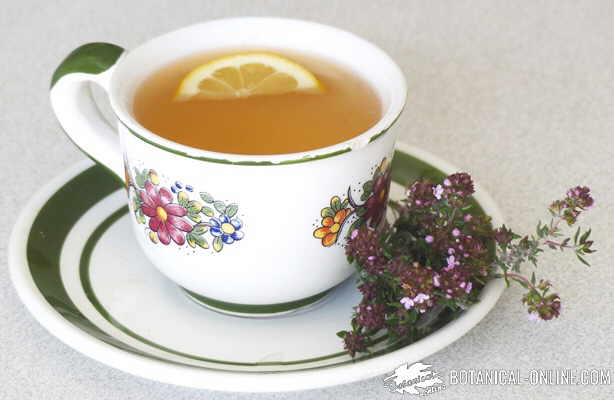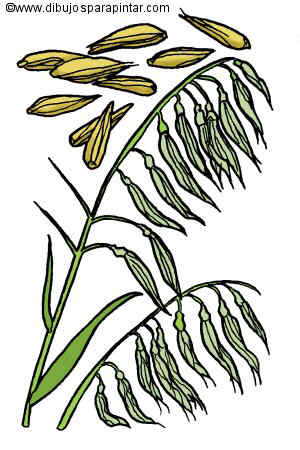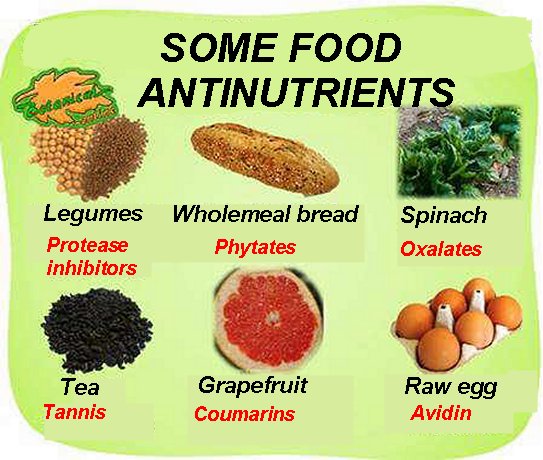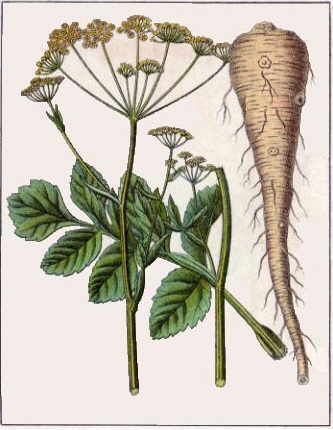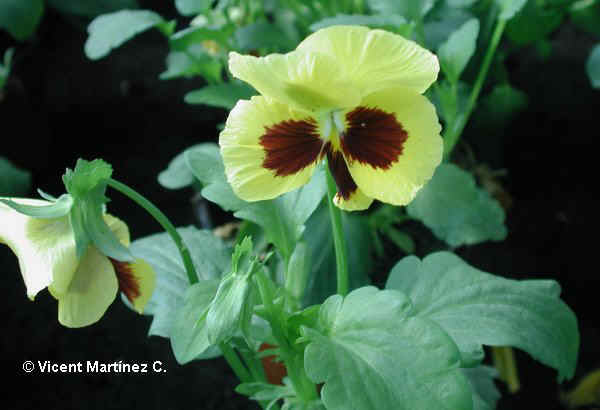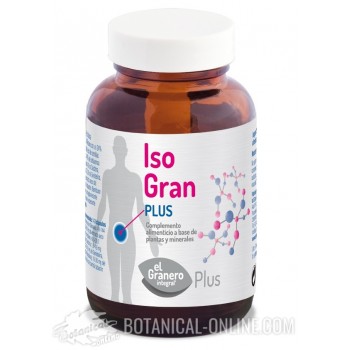Contents
Health benefits of green beans
What are the green beans?
From a dietary point of view the so called “green beans” are the green pods from the bean plant (Phaseolus ssp.) They are collected tender to eat as a vegetable. We can eat the whole fruit, that’s to say, the pod and the seeds that are enclosed in it.
We must distinguish green beans from dried beans. In the last ones, we include such recognized varieties as the Pinto beans, the Kidney beans or the Navy beans. In dry beans, the fruits are collected once they have matured well and we only eat the seeds discarding the pods. (More information about dry beans in the listing below)
Green beans are immature legumes with the outside part of the fruits, called pods, very tender and thin, with small seeds inside poorly developed. These characteristics allow them to be included in the vegetable group, instead of the legumes group, because their properties are close to those of other vegetables. Dried beans are the mature seeds of the bean plant. They have different edible properties that make them to be included in the legumes food group.
Green beans remove fluids and reduce weight
Green beans are a very important food for their edible qualities. They contain few calories and a proportion of 90% water. Taking into account that they are rich in potassium, a mineral that facilitates the removal of body fluids, we realize that green beans are ideal for those wishing to lose weight, lower blood pressure or prevent water retention.
To take into account! Although, at first glance, because of their ability to stimulate diuresis or fluid removal, it might seem that this food could be interesting in other metabolic disorders such as gout or arthritis, and kidney or vesicle disease (kidney stones, infections, gallstones, etc.) However, we must take into account that this food, as it happens with asparagus or spinach, contains lot of oxalate so we must be very cautious if we suffer from arthritis, gout and avoid their use in people who are suffering from cystitis, gallstones or kidney stones
Except in these specific cases, beans can be eaten in abundance. With just over 40 calories per 100 g, a plate of green beans can help us perfectly in the diets to lose weight. To control cellulite, or in hypertension diet.
Beans are a good antioxidant
Beans are especially rich in vitamin C. Eating 100 g of this food provides 20% of daily needs. The functions of this vitamin are very broad, but a major one is its ability to neutralize free radicals. This antioxidant property helps the body eliminate the negative effect of free radicals, preventing cell aging and the onset of many degenerative diseases.
In addition, beans are rich in vitamin A in the form of beta carotene. Vitamin A is another important antioxidant and plays a key role in healthy skin o healthy eyes or in controlling the development of cancerous cells.
Beans are a good food for blood circulation, for pregnant women and for people with problems absorbing food
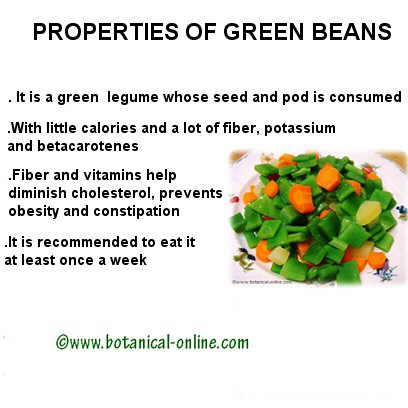
Main curative properties of green beans
It has been shown that vitamins A and C help prevent oxidation of cholesterol by preventing blood clots that form in the arteries. The clots or plaques on the inner wall of the arteries are responsible for producing atherosclerosis narrowing and hardening the arteries which can lead to the onset of cardiovascular disease, including myocardial infarction or angina pectoris.
Besides the role of vitamins as antioxidants for healthy arteries, we must not forget that this food is very rich in magnesium and potassium.
Both are involved in lowering blood pressure, so these minerals, along with folic acid (100 g of green beans contain a fifth of our daily needs) riboflavin, and dietary fiber also contribute to improved arterial health and prevent cardiovascular diseases.
Beans, because they contain a lot of folate, are recommended especially for pregnancy or breasfeeding diet. Part of this vitamin is transferred to the fetus or baby. Folic acid can prevent malformation or improper growth in the baby. Also, it might be interesting for people with frequent diarrhea (Crohn’s disease, ulcerative colitis or similar) because these patients often have folate deficiencies as they have poor absorption of this vitamin.
Beans are very rich in fiber
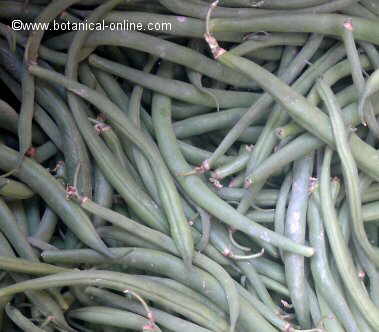
Green beans
Beans are high in soluble fiber, specially mucilage. 100 g of this food deliver 20% of the daily requirement. This fiber is especially useful in the treatment of cholesterol and diabetes. In both cases, the fiber is able to reduce the intestinal absorption of cholesterol and sugar in the intestine so it is helpful to treat these diseases.
The fiber helps improve intestinal transit by increasing stool bulk which promotes peristalsis or movement of the bowel wall. Therefore, it helps to prevent or treat constipation.
We must not forget the importance of this component in preventing colon cancer, then having the ability to wrap and expel feces with heavy metals and other toxic chemicals which, if deposited on the intestinal walls, they represent a potential threat to this part of the body. The fiber content, along with vitamin A, vitamin B and folic acid, advise a regular consumption of this food as a way to prevent the development of cancerous tumors in the colon.
NUTRITIONAL COMPOSITION OF BEANS
| Composition of beans per 100 g | |
| Green beans raw | |
| Water | 90, 27 g |
| Calories | 31 Kcal |
| Fat | 0,12 g |
| Proteins | 1, 8 g |
| Carbohydrates | 7, 14 g |
| Fiber | 3, 4 g |
| Potassium | 209 mg |
| Sodium | 6 mg |
| Phosphorus | 38 mg |
| Calcium | 37 mg |
| Copper | 0,069 mg |
| Magnesium | 25 mg |
| Manganese | 0, 214 mg |
| Iron | 1,04 mg |
| Zinc | 0,24 mg |
| selenium | 0,6 mg |
| Vitamin C | 16, 3 mg |
| Vitamin B1 (Thiamin) | 0, 084 mg |
| Vitamin B2 (Riboflavin) | 0, 105 mg |
| Vitamin B3 (Niacin) | 0,75 mg |
| Vitamin B9 (Folacin) | 37 mcg |
| Vitamin B6 (Pyridoxine) | 0, 074 mg |
| Vitamin A | 668 IU |
| Vitamin E | 0, 410 mg |
![]() More information on beans
More information on beans

